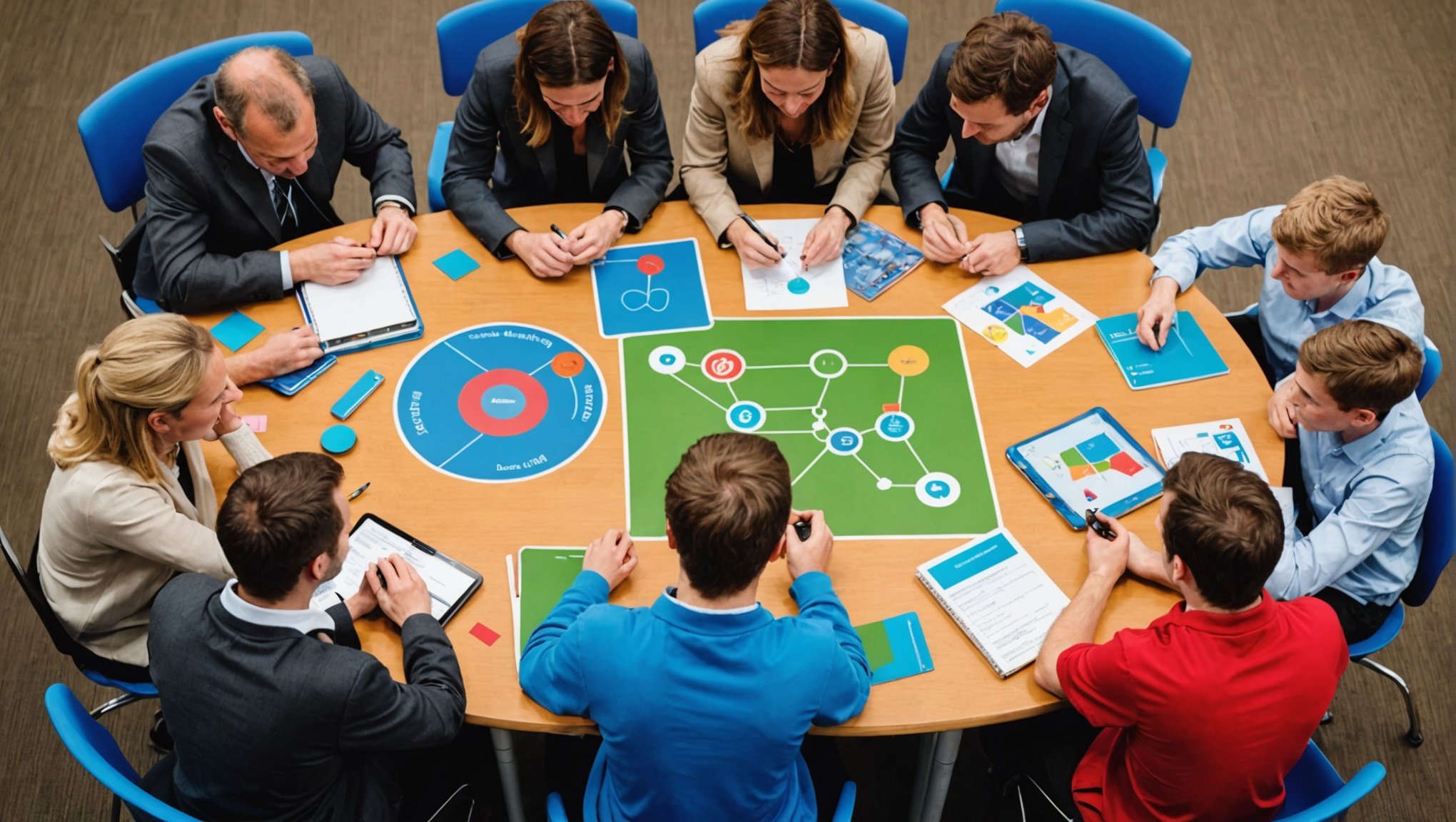Education in Manchester is on the brink of transformation. Innovative gamification strategies are reshaping the way students engage with learning. By integrating game design elements into educational frameworks, schools are fostering motivation and improving retention. This paradigm shift not only addresses contemporary challenges but also equips students with essential skills for the future. Discover how these dynamic approaches can enhance the educational landscape and inspire learners across Manchester.
Overview of Gamification in Education
Exploring the realm of gamification in education reveals a dynamic approach to learning that integrates game design elements into educational settings. This method, rooted in principles such as competition, rewards, and progress tracking, aims to transform traditional learning experiences into engaging and motivating activities for students. By incorporating elements like leaderboards, badges, and point systems, educators can create an environment where students feel more invested and enthusiastic about their learning journeys.
Also to read : Unlocking Secure Data Management: Innovative Blockchain Solutions for Manchester”s Tech Startups
Principles of Gamification
In the educational context, gamification is not just about playing games but about applying game-like elements to educational content. The core principles include:
- Achievement: Recognizing student progress through badges or certificates.
- Competition: Encouraging a healthy sense of competition with leaderboards.
- Collaboration: Promoting teamwork through group challenges and projects.
These principles work together to foster a more engaging and interactive learning environment, ultimately enhancing student motivation and engagement.
In the same genre : Unlocking Fashion Insights: Leveraging Data Analytics for Trend Prediction in London’s Style Scene
Importance for Student Engagement
Educational innovation through gamification is crucial for capturing students’ attention in today’s digital age. Traditional teaching methods often struggle to keep students engaged, but gamification offers a solution by making learning more interactive and enjoyable. This approach not only boosts student motivation but also improves retention rates and academic performance. By turning learning into a game, students are more likely to participate actively and consistently.
Current Trends in Educational Gamification
The landscape of educational gamification is continuously evolving, with new trends emerging to further enhance its effectiveness. Recent developments include:
- Adaptive Learning: Tailoring game-based content to individual student needs.
- Virtual Reality (VR) and Augmented Reality (AR): Immersive experiences that bring educational content to life.
- Game-Based Learning Platforms: Platforms like Kahoot! and Classcraft that offer ready-to-use gamified content.
These trends highlight the ongoing evolution and potential of gamification as a tool for educational innovation. As technology advances, the possibilities for creating engaging and effective learning environments continue to expand, offering exciting opportunities for educators and students alike.
Innovative Gamification Strategies for Manchester’s Education Services
Exploring the landscape of Manchester education reveals a host of innovative strategies designed to enhance gamified learning experiences. These strategies are crafted to engage students effectively and are supported by local educational authorities.
In Manchester, schools have implemented unique gamification strategies that stand out for their creativity and impact. For instance, some schools have adopted a point-based reward system where students earn points for completing assignments and participating in class activities. These points can be exchanged for privileges or small rewards, fostering a sense of achievement and motivation.
Role of Local Educational Authorities
Local educational authorities play a crucial role in promoting gamification within Manchester’s educational framework. They provide resources and training for teachers to integrate gamified elements into their curricula. By organizing workshops and seminars, these authorities ensure that educators are well-equipped to design and implement effective gamified learning experiences.
Successful Gamified Programs in Manchester
Several successful programs in Manchester exemplify the power of gamification in education. Notable examples include:
- MathQuest: A program where students solve math problems to advance in a fictional quest, enhancing problem-solving skills.
- History Heroes: An interactive game that allows students to explore historical events and figures through role-playing.
- Science Challenge Week: A week-long event where students compete in various science-related challenges, promoting teamwork and scientific inquiry.
These programs demonstrate the potential of gamification to make learning engaging and effective, offering valuable insights into the future of education in Manchester.
By focusing on these innovative strategies, Manchester’s education services are paving the way for a more interactive and student-centered learning environment. Through the support of local educational authorities and the implementation of successful gamified programs, the city is setting a benchmark for educational excellence.
Practical Implementation Tips for Educators
Implementing gamification in education requires careful planning and thoughtful execution. Educators can revolutionize their teaching methods by incorporating game design elements effectively.
Selecting the Right Gamification Tools
Choosing the right gamification tools is crucial for successful implementation. Educators should consider the following factors:
- Ease of Use: Tools should be user-friendly for both teachers and students.
- Customization Options: Look for platforms that allow customization to fit specific educational needs.
- Integration Capabilities: Ensure the tool can be seamlessly integrated into existing systems.
A well-chosen tool can enhance the learning experience by providing engaging and interactive content that aligns with curriculum goals.
Designing Engaging Game Elements
Creating engaging game elements is essential to capture students’ interest. Teachers can employ various strategies to design effective game features:
- Narrative: Develop a compelling story that students can follow, making learning more immersive.
- Challenges: Incorporate tasks that require critical thinking and problem-solving.
- Feedback: Provide immediate feedback to help students understand their progress and areas for improvement.
By focusing on these elements, educators can create a learning environment that is both enjoyable and educational.
Integrating Gamification into Existing Curricula
Integrating gamification into traditional curricula can be challenging but rewarding. Here are some strategies for seamless integration:
- Start Small: Begin with a single unit or lesson to test gamification strategies before expanding.
- Align with Objectives: Ensure that game elements align with educational objectives and learning outcomes.
- Involve Students: Engage students in the design process to increase buy-in and relevance.
Successful integration can lead to increased student engagement and improved learning outcomes, making it a valuable educational strategy.
Benefits of Gamification for Student Engagement
Understanding how gamification transforms the educational landscape can reveal significant advantages for students.
Enhancing Learning Outcomes and Retention Rates
Gamification has a profound impact on learning outcomes by making educational content more engaging and interactive. By transforming lessons into game-like experiences, students become active participants in their learning journey. This active participation fosters deeper understanding and better retention of information. For instance, incorporating quizzes with immediate feedback helps reinforce knowledge, leading to improved retention rates over time.
Impact on Collaborative Learning and Social Skills
The impact of gamification extends beyond individual learning, significantly enhancing collaborative learning and developing social skills. By integrating team-based challenges and group projects, gamified environments encourage students to work together, fostering communication and teamwork. This collaborative approach not only strengthens academic skills but also builds social competencies, preparing students for real-world interactions.
Case Studies Showcasing Improved Student Engagement
Several case studies illustrate the benefits of gamification in boosting student engagement. In one notable example, a school implemented a gamified history curriculum where students role-played historical figures. This approach resulted in a 30% increase in participation and a marked improvement in test scores. Another study highlighted a math program that used a point system to motivate students, leading to enhanced engagement and better performance in assessments.
Key Benefits of Gamification
- Increased Motivation: Students are more motivated to learn when education is fun and interactive.
- Improved Engagement: Game elements capture students’ attention, making them more likely to participate actively.
- Enhanced Learning Outcomes: Students retain information better through immersive and interactive experiences.
The impact of gamification on education is undeniable, offering a dynamic approach that enhances both student engagement and learning outcomes. By embracing these strategies, educators can create a more effective and enjoyable learning environment.
Challenges and Solutions in Adopting Gamification
Navigating the adoption of gamification in education presents a unique set of challenges that educators must overcome. Understanding these obstacles and implementing effective solutions is crucial for successful integration.
Common Challenges in Gamification
Educators often face several challenges when implementing gamification. These include:
- Resource Limitations: Limited access to technology and materials necessary for gamification.
- Time Constraints: The additional time required to design and integrate gamified elements.
- Resistance to Change: Hesitance from both educators and students to adopt new teaching methodologies.
These challenges can hinder the potential benefits of gamification if not addressed adequately.
Overcoming Obstacles with Effective Solutions
To overcome these obstacles, educators can employ strategic solutions. Key strategies include:
- Incremental Implementation: Start with small-scale gamification projects to gradually introduce the concept.
- Professional Development: Invest in training programs to equip educators with the necessary skills and knowledge.
- Collaborative Efforts: Encourage collaboration among teachers to share resources and ideas.
By adopting these approaches, educators can effectively address the challenges of gamification.
Importance of Training and Support
Training and support play a vital role in the successful adoption of gamification. Providing educators with comprehensive training ensures they are well-prepared to implement and sustain gamified learning environments. Support networks, such as peer groups and online communities, offer ongoing assistance and resource sharing, facilitating continuous improvement.
“The key to successful gamification lies not just in the tools, but in the training and support provided to educators,” emphasizes educational expert Dr. Jane Smith. This highlights the importance of equipping educators with the skills and resources needed to harness the full potential of gamification in education.
By addressing these challenges through targeted solutions and robust support systems, educators can unlock the transformative power of gamification, creating dynamic and engaging learning experiences for students.








